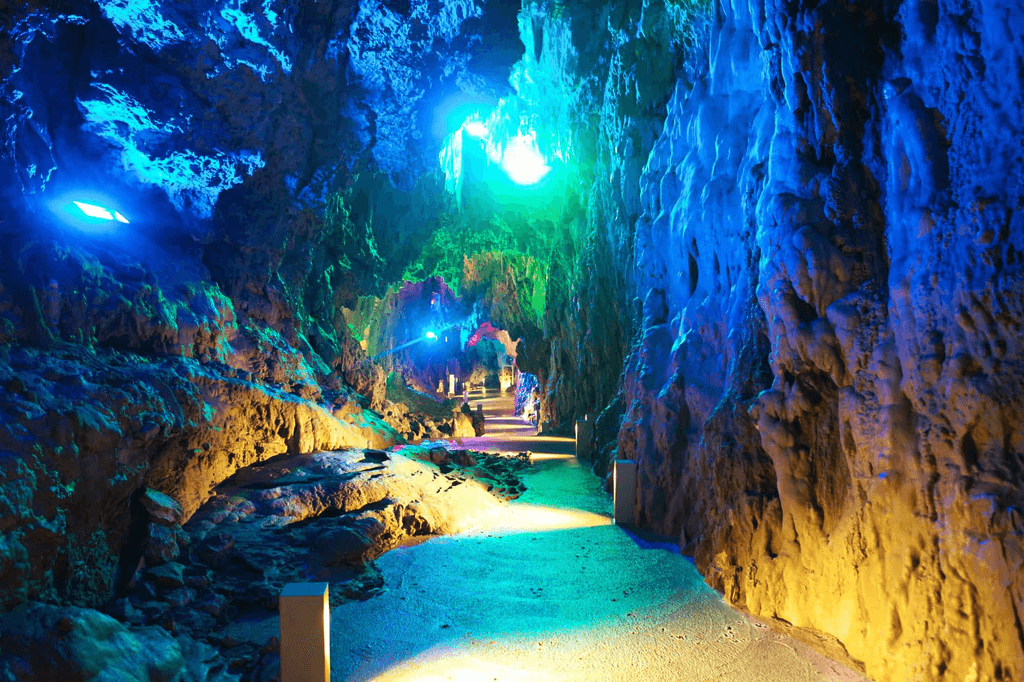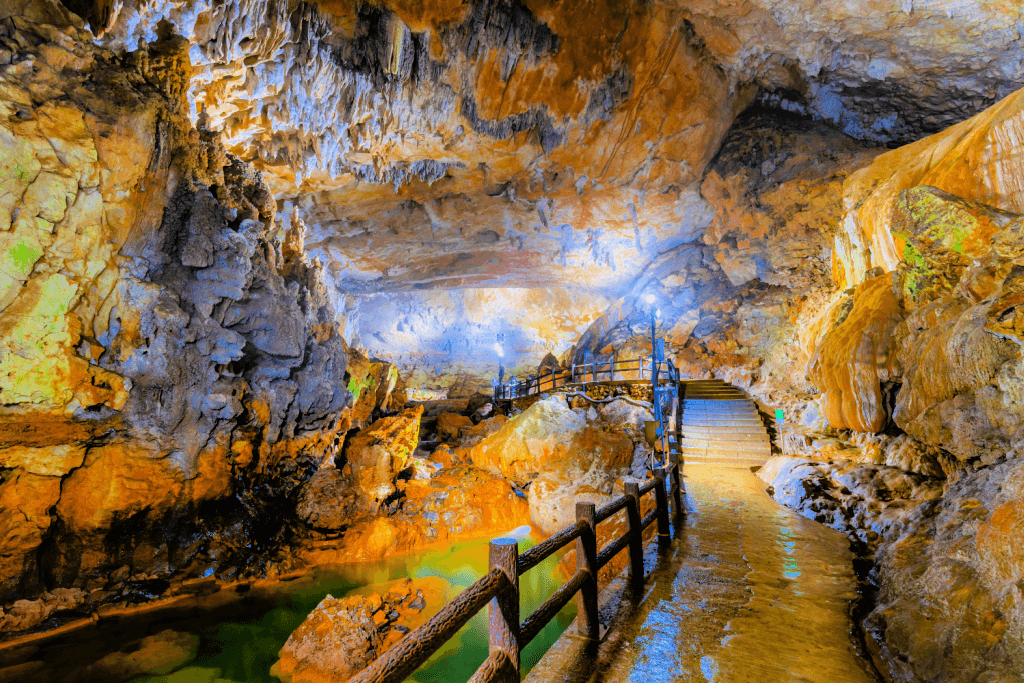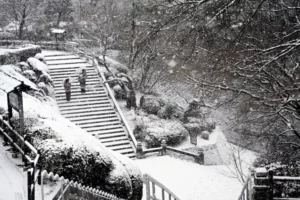The Blue Cave in Japan is an absolute must-see for those who love the deeper side of nature. The sprawling network of caves in Japan is a part of the vast collection of the country’s gorgeous natural wonders.
Caves are fantastic places to visit as they are literally off the beaten track, offer biomes far removed from typical forests and lakes, and make great treks. Japan’s caves hold captivating natural formations, refreshing air, and unique wildlife. They’re a must-see during your visit. If exploring the heart of the country intrigues you, these caves are worth your time!
Table of Contents
ToggleBlue Cave (Okinawa Prefecture)
Located in the Junigami District in Okinawa, the Blue Cave is precisely as it sounds: a cave filled with the most spectacular blue water. As the cave faces the ocean, seawater enters the cave and becomes a vibrant blue. The limestone cave is brimming with tropical fish, which makes it an excellent location for snorkeling and diving.

Multiple agencies offer day trip services for the Blue Cave, catering to the casual tourist and the ardent swimmer. Visitors to the Blue Cave can enjoy whale sighting trips and fishing excursions. These activities make for a complete day. If you can’t visit Croatia’s Bisevo Island Cave, this is an excellent alternative.
Ryusendo Cave (Iwate Prefecture)
Ryusendo Cave is located in Iwaizumi in Iwate Prefecture and offers some of the most stellar subterranean lakes in Japan. It’s a vast location that features eight freshwater lakes. The deepest lake reaches a depth of 98 meters. Only three of these lakes are accessible to the public due to safety concerns.

However, exploring the deep blue and emerald green lakes remains an exceptional experience. Lucky visitors may also see rare bats that live within the incredible caves. Ryusen Shindo, a smaller cave, is across the street from Ryusendo Cave. It houses a small museum where visitors can learn about the science behind the caves.
Akiyoshido Cave (Yamaguchi Prefecture)
Just outside Mine City in Yamaguchi Prefecture is Akiyoshido Cave, not only one of Japan’s largest limestone caves but also a profoundly historical site. The geography of Akiyoshido Cave is karst, or a limestone landscape that has been eroded by dissolution. Karst is famous for its countless ridges, ledges, caverns, sinkholes, and streams.

Akiyoshido Cave provides tour guides, and they also educate visitors about the limestone geography and the cave’s history. Feudal warlords once battled within these caves. Not to mention, dedicated guides and paths ensure visitor safety.
Are you interested in enjoying artisanal snacks from Japan? Check out Sakuraco! Sakuraco delivers traditional Japanese snacks, teas, sweets, and snacks from local Japanese makers directly to your door so you can enjoy the latest treats directly from Japan!
Narusawa Ice Caves (Yamanashi Prefecture)
Conveniently located outside of Tokyo and Yokohama, the Narusawa Ice Caves are ancient and culturally significant. Over the centuries that the caves have existed, large ice deposits have formed deep within them. The people who have lived near the Narusawa Ice Caves have used the ice for themselves, making it not only a gorgeous cave system to view but also an essential aspect of many people’s lives before commercial refrigeration.

Additionally, admission to the caves is very cheap, and as they are about two hours outside of Tokyo, they make for a perfect day trip. The Narusawa Ice Caves are shaped similarly to an infinity symbol, which makes them an easy and accessible walk for visitors of all ages.
Fuji Fugaku Wind Cave (Yamanashi Prefecture)
Nestled in the Aokigahara Jukai forest on the slopes of Mt. Fuji, Fuji Fugaku Wind Cave serves as both a very accessible cave system for people to explore and also as a national monument. The Fuji Fugaku Wind Cave was used to store silkworm eggs and seeds until the beginning of the Showa era, making it a critical piece of Japanese history.

Known as a lateral cave, Fuji Fugaku Wind Cave provides an easy walking experience where visitors can see lava, ice pillars, and more. A unique trait of the cave is that its basalt walls do not produce echoes, making the caves unusually quiet!
Why should I visit these caves?
Japan is brimming with natural cave systems, and each deserves to be visited. Many of Japan’s caves, while not only wondrous sights to be seen, have also acted as significant economic and historical sites. Cave systems are essential ecosystems that contain many different types of moss, fern, and animal species. Japan’s caves offer simple walking tours, diving adventures, and more rugged experiences for those with experience. Have you visited any of Japan’s caves? If so, which ones did you visit? Do you have a favorite cave? Let us know in the comments!











